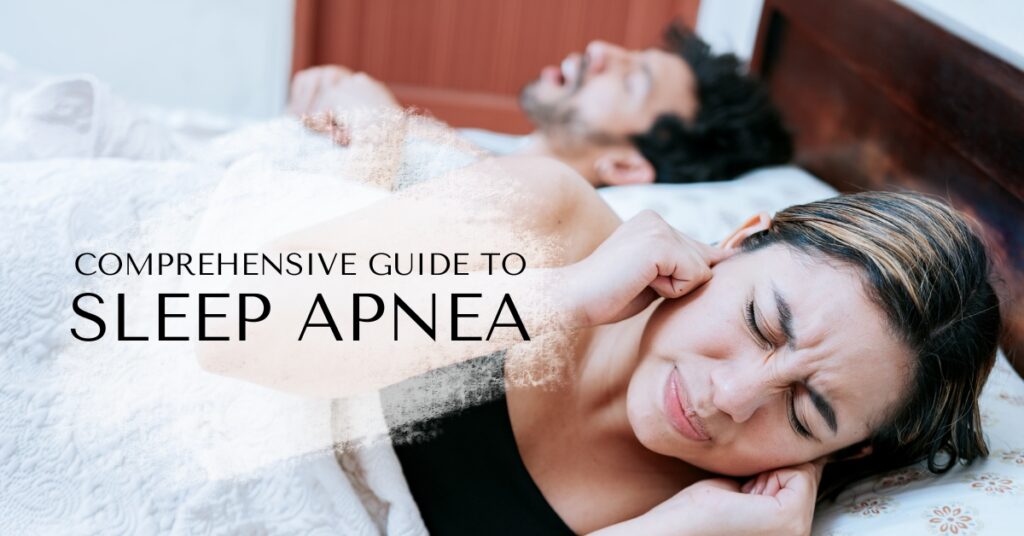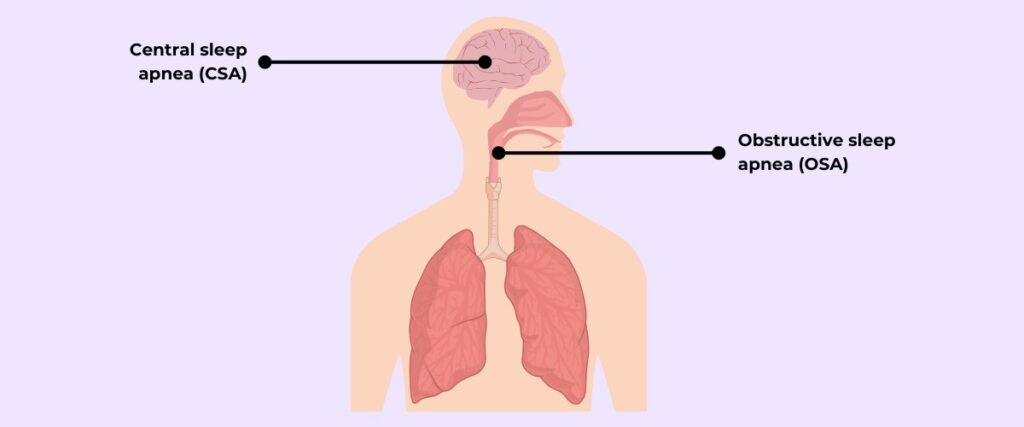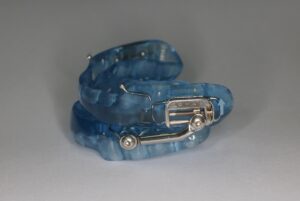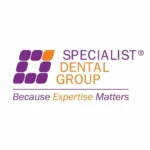Article reviewed by:
Dr Tan Kian Meng • Prosthodontist
Dr Soh Shean Han • Orthodontist

Do you have severe snoring habits? Other than the occasional disturbances caused to your partner, this could signal a concerning underlying issue. Chronic snoring is associated with a sleep condition known as sleep apnea. Apart from daytime fatigue, untreated sleep apnea can lead to numerous health complications. Given the potential health consequences of sleep apnea, it is crucial to recognise its signs and symptoms, and seek professional assistance when necessary.
We cover the top six commonly asked questions about sleep apnea.
- What is sleep apnea and what causes it?
- What are the signs and symptoms of sleep apnea?
- Is sleep apnea dangerous?
- Is there more than one type of sleep apnea?
- Can sleep apnea be treated?
- How do I find out the kind of sleep apnea I have?
What is sleep apnea and what causes it?
Sleep apnea is a sleep disorder characterised by pauses in breathing or occurrences of shallow or infrequent breathing while asleep. These breathing pauses, known as apneas, can range from 10 seconds to several minutes and may happen anywhere from 5 to more than 30 times per hour. Each unusually shallow breathing is termed a hypopnea.
This obstruction typically occurs when the muscles in the back of the throat relax too much, causing the airway to narrow or close. When it narrows, you will start to snore. When the airway becomes completely blocked, air cannot enter your lungs and you have sleep apnea. This compels the diaphragm and chest muscles to exert more effort to reopen the airway, leading to gasping movements as breathing resumes.
What are the signs and symptoms of sleep apnea?
Common signs and symptoms of sleep apnea include:
- Loud snoring – although snoring and sleep apnea are closely associated, the latter can potentially exist without snoring in some cases.
- Not breathing during sleep – generally, your partner or family members will be the first to notice this symptom while you are asleep.
- Excessive daytime sleepiness (hypersomnia): Individuals with sleep apnea tend to feel extremely tired and restless the next day, even after sufficient rest.
- Gasping for air during sleep
- Waking up with a dry mouth
- Head aching in the morning
- Difficulty sleeping (insomnia)
- Unable to focus while awake
- Being irritable
Is sleep apnea dangerous?

Untreated sleep apnea can lead to serious health complications such as:
- High blood pressure, or hypertension, is caused by a sudden drop in blood oxygen levels during sleep apnea. This can lead to an increase in blood pressure, straining the cardiovascular system.
- Heart disease: Sleep apnea leads to increased pressure within the heart’s blood vessels and certain chambers. This pressure strains the heart and may damage the heart muscle.
- Daytime fatigue increases the risk of accidents. Daytime sleepiness can be hazardous depending on your activities. Falling asleep while driving or operating machinery can have deadly consequences for you and those in your vicinity.
- Diabetes: As the body experiences oxygen deprivation, the amount of carbon dioxide in the bloodstream rises. As a result, glucose levels in the blood increase due to heightened insulin resistance.
Is there more than one type of sleep apnea?

There are three types of sleep apnea:
- Obstructive Sleep Apnea (OSA) is the most common. In this condition, the throat muscles relax excessively during sleep, leading to partial or complete airway blockage.
- Central Sleep Apnea (CSA) occurs when the brain fails to send the appropriate signals to the muscles that control breathing, resulting in interrupted breathing patterns. It varies from OSA, where your breathing is physically obstructed.
- Mixed Sleep Apnea, or complex sleep apnea, involves a combination of OSA and CSA.
Can sleep apnea be treated?
Our dental specialists at Specialist Dental Group offer oral appliances and jaw (orthognathic) surgery to treat sleep apnea. Other treatment alternatives include the Continuous Positive Airflow Pressure (CPAP) Machine and other surgical procedures.
Oral appliances
Our team of prosthodontists can fabricate an oral appliance called a mandibular advancement device. This custom-made mouthpiece gently moves the lower jaw forward and slightly opens the bite, widening the airway. Scientific studies have shown that oral appliance therapy (OAT) is often effective for individuals with mild to moderate, and severe obstructive sleep apnea.

When necessary, orthodontists can also perform:
- orthopaedic maxillary expansion (widening upper jaw)
- maxillary protraction (bringing upper jaw forward) and/or
- mandibular advancement (bringing lower jaw forward)
via growth modification using appliances, or orthognathic surgery (with the expertise of an oral surgeon), depending on the patient’s age.
The type of procedure depends on which jaw(s) is the cause of the apnea and the location of airway narrowing.
Continuous Positive Airflow Pressure (CPAP) Machine
The CPAP machine is suitable for individuals with moderate to severe obstructive sleep apnea. This device, resembling a mask, covers the nose and mouth, delivering a continuous flow of air that maintains open air passages during sleep. Maintaining the air pressure prevents pauses in breathing. Also, it reduces or even eradicates the snoring that often comes with sleep apnea.
Surgery treatment
Various surgical procedures are used to treat sleep apnea, typically as a secondary option for individuals who decline CPAP therapy or do not find it effective. Surgical treatment for obstructive sleep apnea is tailored to address all anatomical areas of obstruction. Corrective measures for the nasal passages are often combined with interventions targeting the oropharynx passage. An oral surgeon can carry out the orthognathic surgery as well as jaw expansion to improve airways.
Lifestyle modifications
Implementing lifestyle adjustments can significantly alleviate sleep apnea symptoms. Refraining from alcohol, sleeping pills, and other sedatives is beneficial, as they tend to relax throat muscles, leading to airway collapse during sleep.
Since sleep apnea tends to worsen when lying on one’s back (supine) position, sleeping on one’s side is often recommended. This positioning change has been observed to be beneficial, possibly due to alterations in pulmonary oxygen reserves, particularly in central sleep apnea cases.
In addition, as weight management is crucial in managing sleep apnea, your doctor may recommend dietary changes.
How do I find out the type of sleep apnea I have?
As there can be overlaps in obstructive and central sleep apnea symptoms, the diagnosis of sleep apnea is usually confirmed using a sleep test. The number of apnea (complete cessation of airflow) and hypopnea (partial obstruction of airflow) events per hour is used to classify the severity of the condition. Our team of dental specialists work closely with medical doctors who can perform this procedure.
If the above-mentioned symptoms of sleep apnea are consistent with yours, schedule a consult with our dental specialist team for a professional diagnosis today.
Need some dental assistance?
Drop us a text via the WhatsApp icon on the bottom right corner, enquire or call us at (65) 6733 7883.








